
THE RUNAWAY BLIMP NEAR MUNCY PA...: image by Carl McDaniel, 29 October 2014
Unsnack your snood, madonna, for the stars
Are shining on all brows of Neversink.
Already the green bird of summer has flown
Away. The night-flies acknowledge these planets,
Predestined to this night, this noise and the place
Of summer. Tomorrow will look like today,
Will appear like it. But it will be an appearance,
A shape left behind, with like wings spreading out,
Brightly empowered with like colors, swarmingly,
But not quite molten, not quite the fluid thing,
A little changed by tips of artifice, changed
By the glints of sound from the grass. These are not
The early constellations, from which came the first
Illustrious intimations -- uncertain love,
The knowledge of being, sense without sense of time.
Take the diamonds from your hair and lay them down.
The deer-grass is thin. The timothy is brown.
The shadow of an external world comes near.
Wallace Stevens (1879-1955): Late Hymn from the Myrrh-Mountain, 1946, from Transport to Summer, 1947
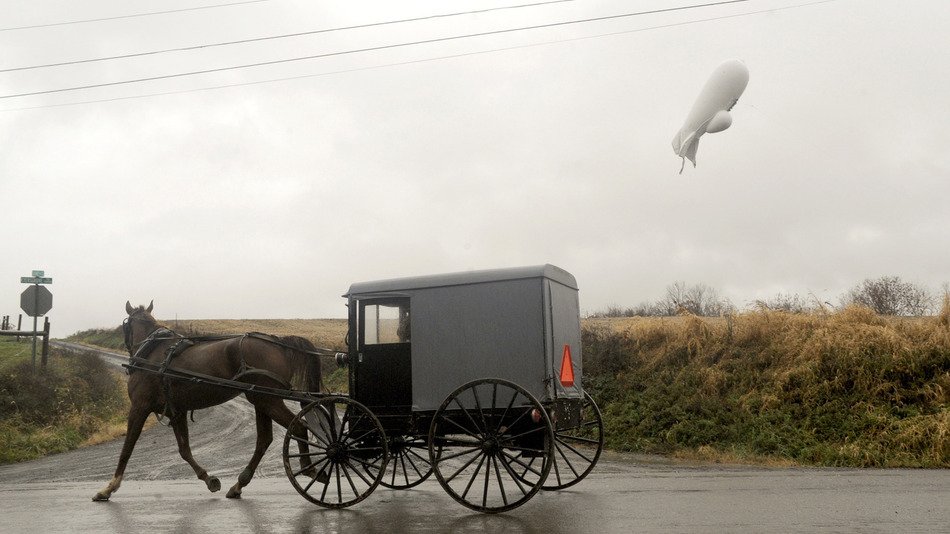
The runaway military #blimp went down near Moreland Township, Pennsylvania, and it looked like this: image via Mashable Verified account @mashable, 28 October 2015

More Frightening Than Halloween. Every day I seem to notice more of these objects in the sky. Big Brother protecting us or is something sinister happening here?: photo by mcnod, 26 October 2015

365: Day 238: Aerostat-ic. Phone camera loooking through binoculars (so technically monocular) [Belcamp, Maryland]: photo by Rob Clatterbuck, 28 August 2015
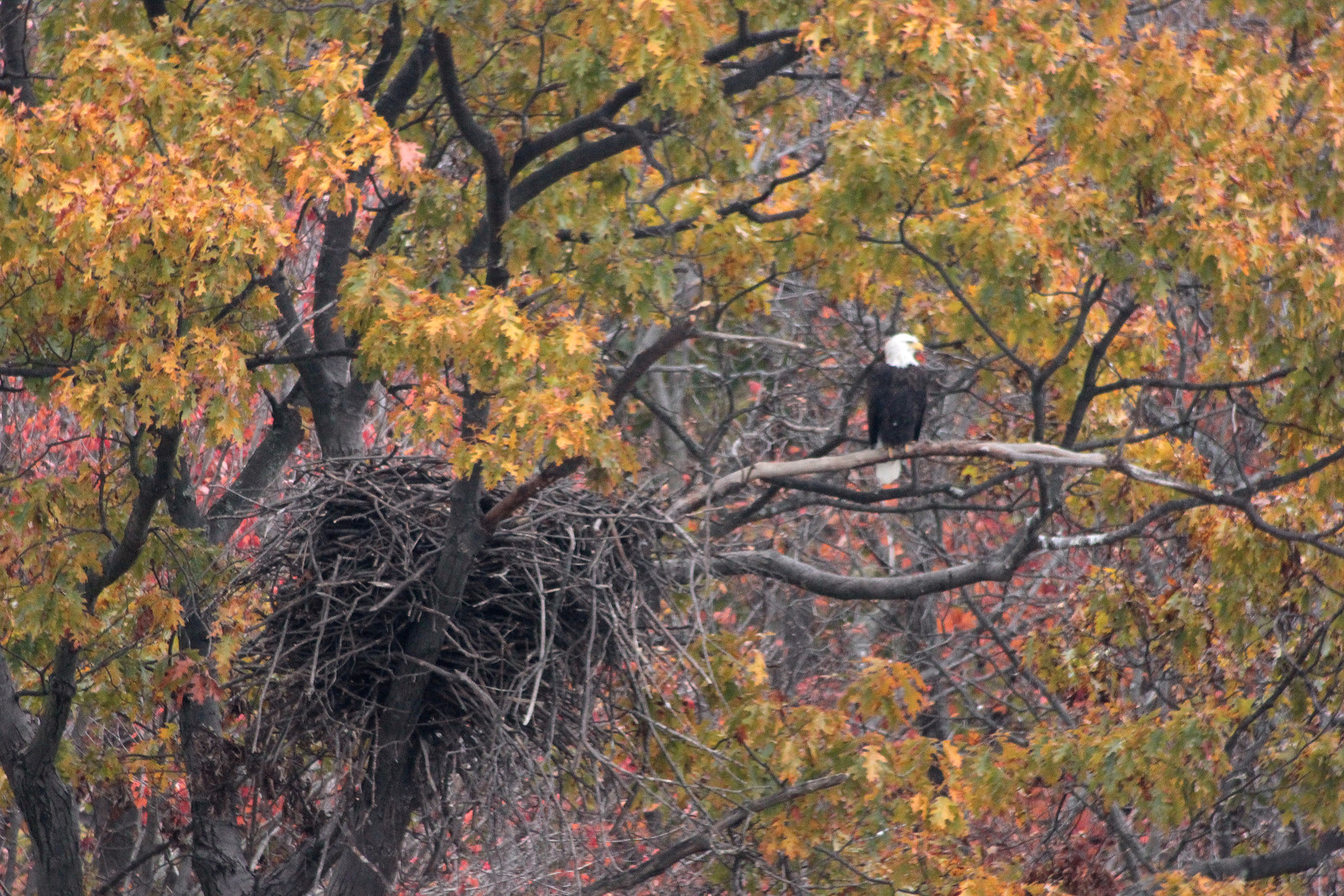
Bald eagle and eyrie. Montour Preserve at Lake Chillisquaqua. Near Exchange, Pennsylvania.: photo by fishhawk, 24 October 2015
Eudora Welty: Place
Place can be transparent, or translucent: not people. In real life we have to express the things plainest and closest to our minds by the clumsy word and the half-finished
gesture; the chances are our most usual behavior makes sense only in a kind of daily way, because it has become familiar to our nearest and dearest, and still demands
their constant indulgence and understanding. It is our describable outside that defines us, willy-nilly, to others; that may save us, or destroy us, in the world; it may be
our shield against chaos, our mask against exposure; but whatever it is, the move we make in the place we live has to signify our intent and meaning.
*
Surely place induces poetry, and when the poet is extremely attentive to what is there, a meaning may even attach to his poem out of the spot on earth where it is
spoken, and the poem signify the more because it does spring so wholly out of its place, and the sap has run up into it as into a tree.
*
There may come to be new places in our lives that are second spiritual homes closer to us in some ways, perhaps, than our original homes. But the home tie is the blood
tie. And had it meant nothing to us, any other place thereafter would have meant less, and we would carry no compass inside ourselves to find home ever, anywhere at
all. We would not even guess what we had missed.
Eudora Welty (1909-2001): from Place in Fiction, in The Eye of The Story and Other Essays, 1959
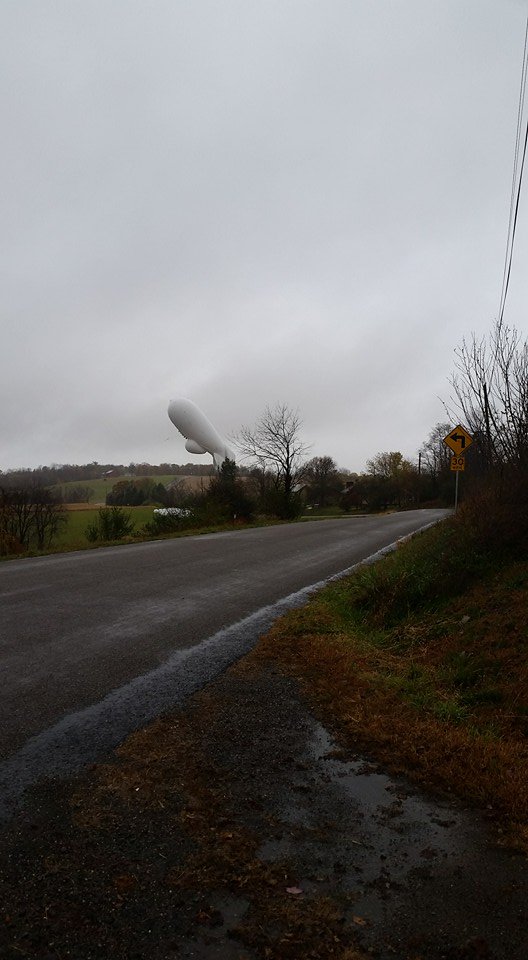
BLIMP DOWN: State Police report #blimp is down in Montour county near Muncy. We got this photo from viewer there.: image via John Meyer Verified account @JohnMeyerWNEP, 28 October 2015

Favorites today, #blimplivesmatter, and headline 'Fled Zeppelin.' photo by Carrie Littlewood: image via Michael K. Dakota @DakotaLDN, 28 October 2015

#foundblimp #bloomsburg #blimp shot by Susan Switzer & Rhame Eyer @LDNews: image via Michael K. Dakota @DakotaLDN, 28 October 2015

#foundblimp #bloomsburg #blimp shot by Susan Switzer & Rhame Eyer @LDNews: image via Michael K. Dakota @DakotaLDN, 28 October 2015

#blimp #BlimpOnTheLoose #BlimpLife #looseblimp She's down in #Millsville: image via Michael K. Dakota @DakotaLDN, 28 October 2015
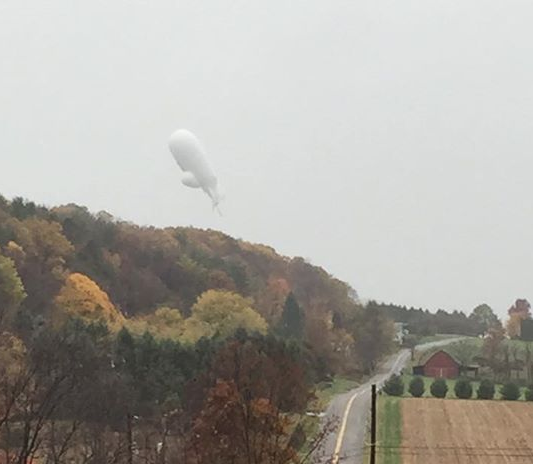
Another photo of what is believed to be the #blimp via Holly Starr near Bloomsburg, PA: image via CampusWeatherService @PSUWeather, 28 October 2015 State College, PA

A viewer just sent us this photo from Bloomsburg. We are getting numerous reports of sightings in that area. #Blimp: image via John Meyer Verified account @JohnMeyerWNEP, 28 October 2015
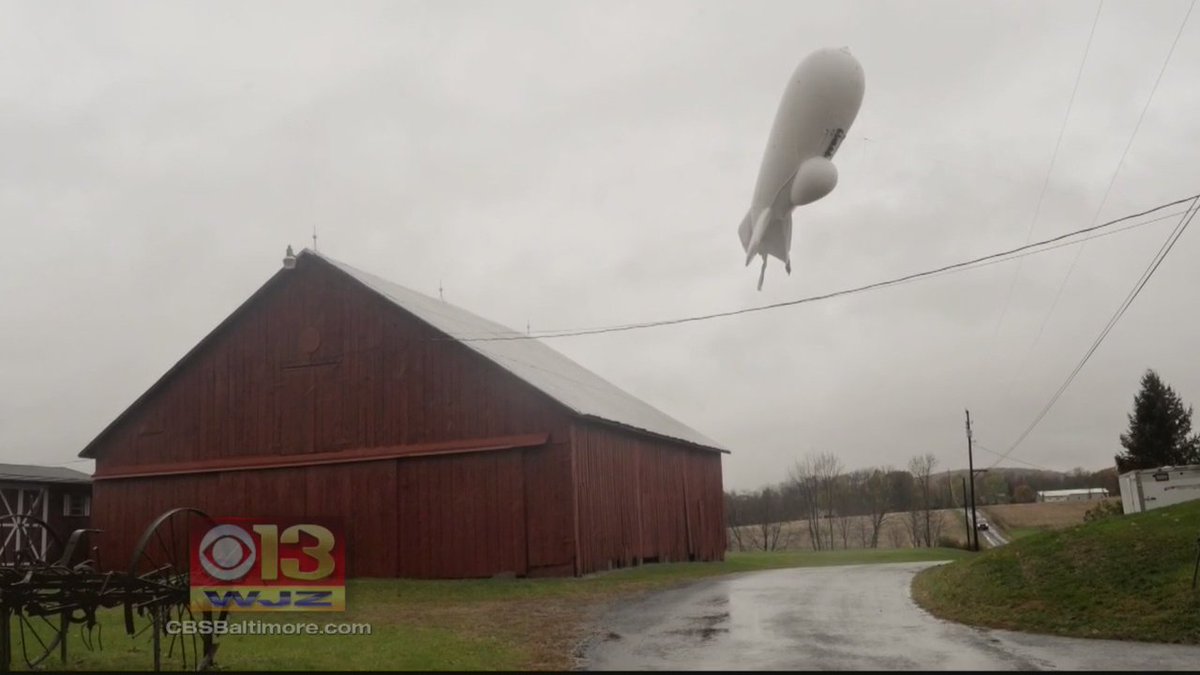
State Police used shotguns to deflate #blimpontheloose #blimp: image via WJZ / CBS Baltimore Verified account @cbsbaltimore, 28 October 2015
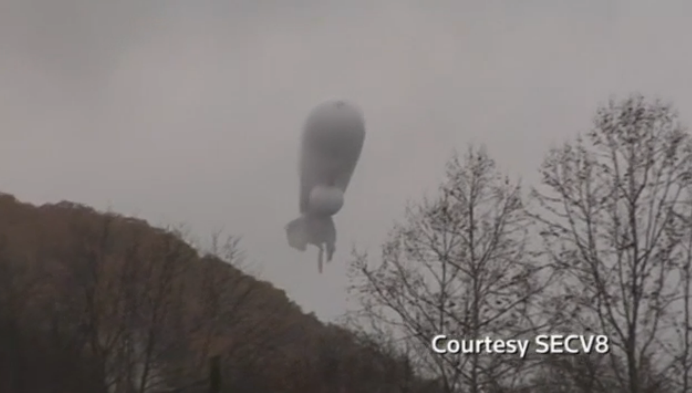
Runaway U.S. military blimp wreaks havoc in Pennsylvania: image via Reuters Top News @Reuters, 28 October 2015
Runaway U.S. military blimp wreaks havoc in Pennsylvania: Joe McDonald and Phil Stewart, Reuters, 28 October 2015 (updated 29 October 2015)
A high-tech U.S. military blimp designed to detect a
missile attack came loose on Wednesday and wreaked havoc as it floated
from Maryland into Pennsylvania while dragging more than a mile of cable
and knocking out power to thousands.
The U.S. military scrambled two armed F-16 fighter jets to keep watch as the massive blimp traveled into civilian airspace after coming untethered from its base at Aberdeen Proving Ground, a U.S. Army facility 40 miles (65 km) northeast of Baltimore.
Pentagon officials said they were unsure why the 242-foot-long blimp broke free at 12:20 p.m. Military officials wrestled for hours over the best way to bring it down safely, but eventually it deflated on its own.

Technically speaking, JLENS is an aerostat, which means tethered airship. It’s anchored to the ground by a 11/8 inch thick super-strong cable. The tether is strong enough to withstand 100 mph winds… and during testing, it accidentally was exposed to a 106 mph storm and did just fine. Electricity runs up the cable and powers JLENS’ radar, and ones-and-zeroes from the radar run down fiber optic wires to a computer processing station on the ground. In fact, a lot of the things which makes JLENS work are on the ground… including the people who operate the system: photo via Raytheon, 2015
The blimp, part of a $2.8 billion Army program, landed in a rural, wooded area in Exchange, Pennsylvania, a community outside Bloomsburg, about 150 miles (240 km) north of the Aberdeen Proving Ground.
John Thomas, a spokesman for Columbia County emergency management agency, said there were no reports of injuries but had no more details about the landing.
Pennsylvania police and military officials guarded a wide safety perimeter around the blimp, which settled amid farmland in the remote area. Residents, including members of an Amish community, watched them work under steady rainfall.

A high-tech U.S. military blimp designed to detect a missile attack is pictured coming to the ground in Montour County, Pennsylvania: photo via Reuters/SECV8, a segment of Service Electric Cablevision, 28 October 2015
The blimp's travels
caused widespread damage, officials said. At one point, 30,000
Pennsylvania residents were without power, the governor's office said.
"The tether attached to the aircraft caused widespread power outages across Pennsylvania," said a statement from Governor Tom Wolf's office.

JLENS doesn’t have any weapons, so if it detects an inbound threat like a cruise missile or drone, it will pass that information on to the National Capital Region’s Integrated Air Defense System. Another cool feature is that JLENS works with other air defense systems, like the AMRAAM air-to-air missile, the U.S. Navy’s Standard Missile-6, the U.S. Army’s Patriot air defense system and the National Advanced Surface to Air Missile System, which is currently defending the Washington, D.C. area.: photo via Raytheon, 2015
The blimp's travels were a sensation on social media, with hashtags like #Blimpflood and #Blimpmemes ranking among the top trending topics. At least two Twitter parody accounts sprung up, gaining nearly 2,000 followers in just under two hours.
The attention was unlikely to be welcomed by the Army, which calls the program the Joint Land-Attack Cruise Missile Elevated Netted Sensor System, or JLENS. The program was restructured after it overran cost estimates, the Government Accountability Office said in 2014.

JLENS by jay ta.: photo by total annihilation, 4 November 2006
The program is comprised of two blimps, each 242 feet long. The second blimp will be grounded until the military inspects it and finishes an investigation into the unmooring, said Navy Captain Scott Miller, a spokesman for the U.S. military's North American Aerospace Defense Command, or NORAD.
The system itself is still in a testing phase. Manufacturer Raytheon Co's website says it would become part of the defenses that help protect the metropolitan Washington, D.C., area.

There’s a good reason senior military leaders are concerned about cruise missiles. They fly low, making them really hard for a ground-based radar to spot; there are lots of them out there; and some of them can even be launched from innocent-looking cargo containers.
Cruise missile defense is literally JLENS’s middle name. When the system is operational at Aberdeen Proving Ground, it will become part of the defenses that help protect the National Capital Region -- the federal government's name for the metro Washington, D.C. area.: photo via Raytheon, 2015
Raytheon's website says the blimps are meant to be tethered to the ground by a "11/8 inch thick super-strong cable," which should withstand 100 mile-per-hour (160 kph) winds. Electricity runs up the cable and powers the radar, the website says.
NORAD said the blimp became untethered while at an altitude of 6,600 feet, far below its maximum recommended altitude of up to 10,000 feet.
By early afternoon, it had climbed to 16,000 feet as it traveled into Pennsylvania.
NORAD said the system was designed to defend against threats beyond cruise missiles, to include drone aircraft and "surface moving targets" such as swarming boats and tanks.
The U.S. military scrambled two armed F-16 fighter jets to keep watch as the massive blimp traveled into civilian airspace after coming untethered from its base at Aberdeen Proving Ground, a U.S. Army facility 40 miles (65 km) northeast of Baltimore.
Pentagon officials said they were unsure why the 242-foot-long blimp broke free at 12:20 p.m. Military officials wrestled for hours over the best way to bring it down safely, but eventually it deflated on its own.
Technically speaking, JLENS is an aerostat, which means tethered airship. It’s anchored to the ground by a 11/8 inch thick super-strong cable. The tether is strong enough to withstand 100 mph winds… and during testing, it accidentally was exposed to a 106 mph storm and did just fine. Electricity runs up the cable and powers JLENS’ radar, and ones-and-zeroes from the radar run down fiber optic wires to a computer processing station on the ground. In fact, a lot of the things which makes JLENS work are on the ground… including the people who operate the system: photo via Raytheon, 2015
The blimp, part of a $2.8 billion Army program, landed in a rural, wooded area in Exchange, Pennsylvania, a community outside Bloomsburg, about 150 miles (240 km) north of the Aberdeen Proving Ground.
John Thomas, a spokesman for Columbia County emergency management agency, said there were no reports of injuries but had no more details about the landing.
Pennsylvania police and military officials guarded a wide safety perimeter around the blimp, which settled amid farmland in the remote area. Residents, including members of an Amish community, watched them work under steady rainfall.
A high-tech U.S. military blimp designed to detect a missile attack is pictured coming to the ground in Montour County, Pennsylvania: photo via Reuters/SECV8, a segment of Service Electric Cablevision, 28 October 2015
"The tether attached to the aircraft caused widespread power outages across Pennsylvania," said a statement from Governor Tom Wolf's office.
JLENS doesn’t have any weapons, so if it detects an inbound threat like a cruise missile or drone, it will pass that information on to the National Capital Region’s Integrated Air Defense System. Another cool feature is that JLENS works with other air defense systems, like the AMRAAM air-to-air missile, the U.S. Navy’s Standard Missile-6, the U.S. Army’s Patriot air defense system and the National Advanced Surface to Air Missile System, which is currently defending the Washington, D.C. area.: photo via Raytheon, 2015
The blimp's travels were a sensation on social media, with hashtags like #Blimpflood and #Blimpmemes ranking among the top trending topics. At least two Twitter parody accounts sprung up, gaining nearly 2,000 followers in just under two hours.
The attention was unlikely to be welcomed by the Army, which calls the program the Joint Land-Attack Cruise Missile Elevated Netted Sensor System, or JLENS. The program was restructured after it overran cost estimates, the Government Accountability Office said in 2014.

JLENS by jay ta.: photo by total annihilation, 4 November 2006
The program is comprised of two blimps, each 242 feet long. The second blimp will be grounded until the military inspects it and finishes an investigation into the unmooring, said Navy Captain Scott Miller, a spokesman for the U.S. military's North American Aerospace Defense Command, or NORAD.
The system itself is still in a testing phase. Manufacturer Raytheon Co's website says it would become part of the defenses that help protect the metropolitan Washington, D.C., area.
There’s a good reason senior military leaders are concerned about cruise missiles. They fly low, making them really hard for a ground-based radar to spot; there are lots of them out there; and some of them can even be launched from innocent-looking cargo containers.
Cruise missile defense is literally JLENS’s middle name. When the system is operational at Aberdeen Proving Ground, it will become part of the defenses that help protect the National Capital Region -- the federal government's name for the metro Washington, D.C. area.: photo via Raytheon, 2015
Raytheon's website says the blimps are meant to be tethered to the ground by a "11/8 inch thick super-strong cable," which should withstand 100 mile-per-hour (160 kph) winds. Electricity runs up the cable and powers the radar, the website says.
NORAD said the blimp became untethered while at an altitude of 6,600 feet, far below its maximum recommended altitude of up to 10,000 feet.
By early afternoon, it had climbed to 16,000 feet as it traveled into Pennsylvania.
NORAD said the system was designed to defend against threats beyond cruise missiles, to include drone aircraft and "surface moving targets" such as swarming boats and tanks.

NORAD Blimp Becomes Loose From Mooring: image via WMAL News Verified account @wmalnews, 28 October 2015
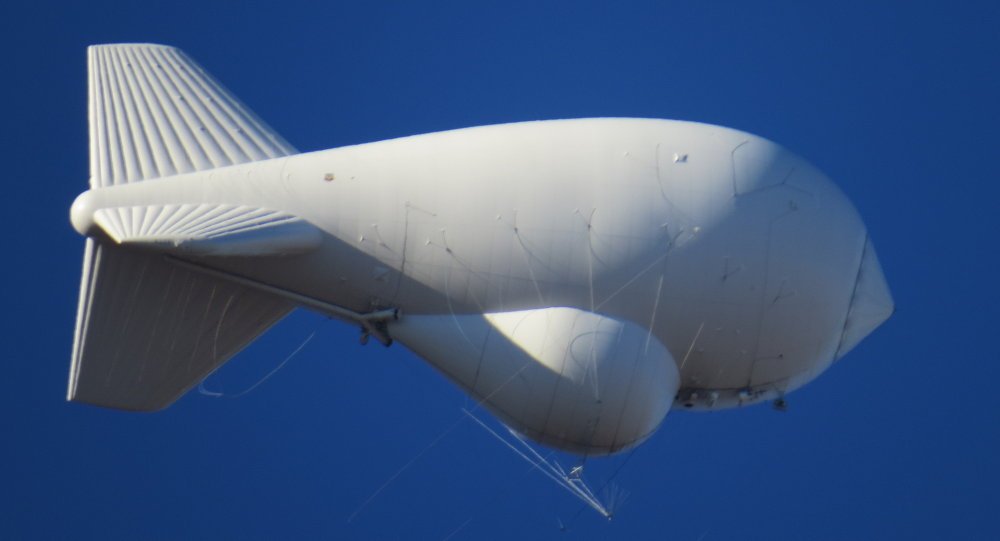
DETAILS: The 243-foot long helium-filled NORAD Surveillance #blimp broke loose in Maryland: image via Sputnik Verified account @Sputnikint, 28 October 2015

U.S. military #blimp escapes, joins @twitter: image via Reuters TV @ReutersTV, 28 October 2015
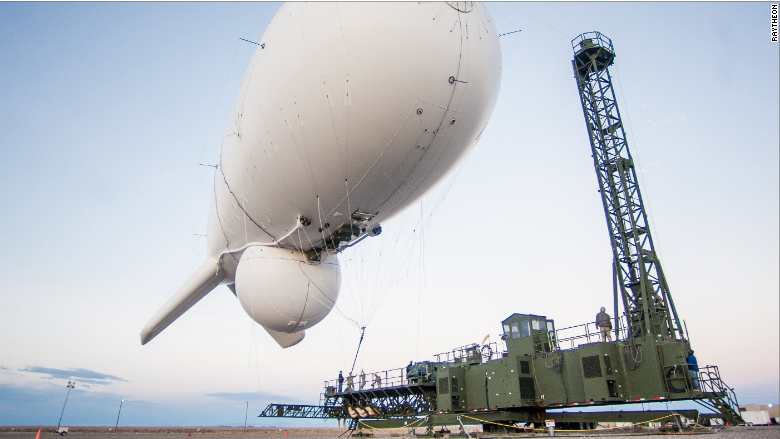
Twitter gets carried away over loose #blimp, no shortage of hot air escapes, joins @twitter: image via CNN Verified account @CNN, 28 October 2015

So, how'd that #blimp get loose yesterday?: image via CNN Verified account @CNN, 29 October 2015
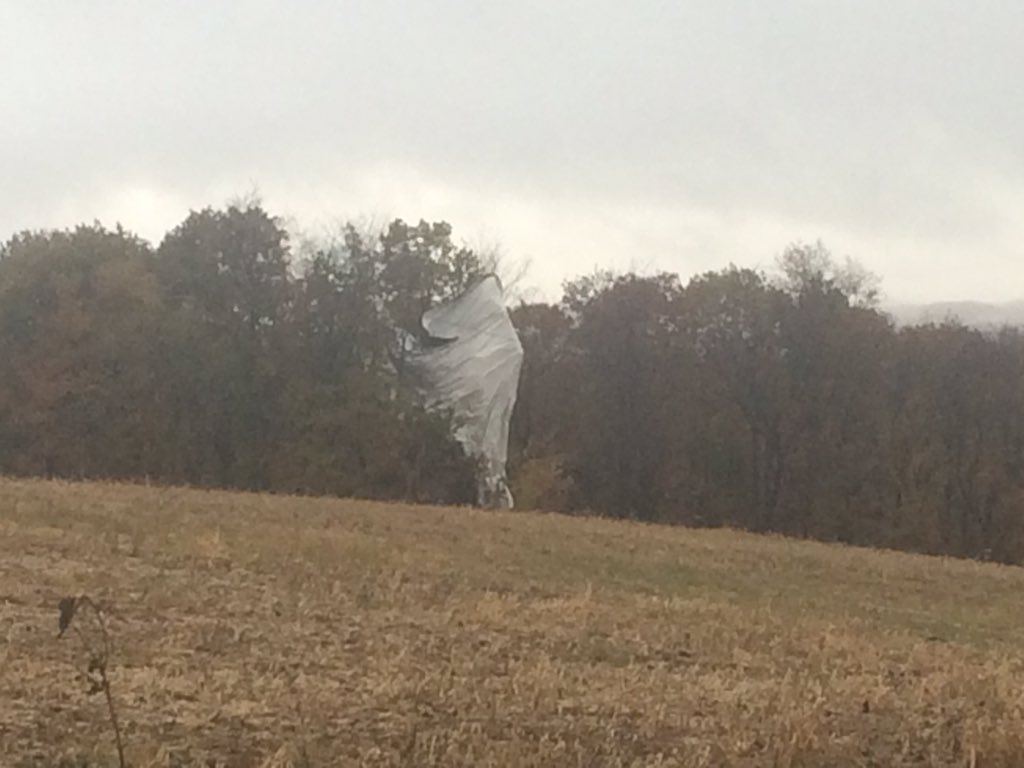
Here is the #blimp well part of it...in a tree near Muncy @WNEP: image via Nikki Krize Verified account @NikkiKrize, 28 October 2015 Pennsylvania, USA

Hay day. Making hay while the sun shines. (Cooper, Pennsylvania.): photo by fishhawk, 29 August 2015

Covered Bridge Road (I): Farm along Covered Bridge Road, Moreland Township, Lycoming County: photo by Nicholas A. Tonelli, 14 September 2014

Frazier Covered Bridge (I). Moreland Townaship, Lycoming County. The bridge was built in 1888 and is listed in the National Register of Historic Places. It crosses Little Muncy Creek in a quiet, secluded farming valley: photo by Nicholas A. Tonelli, 14 September 2014

Covered Bridge Road (I): Farm along Covered Bridge Road, Moreland Township, Lycoming County: photo by Nicholas A. Tonelli, 14 September 2014
Farming near Klingerstown, Pennsylvania: photo by Scott Bauer, 2005 (U.S. Dept. of Agriculture)

Evening. Sky patterns. (Danville, Pennsylvania.): photo by fishhawk, 29 August 2015
Silent Spring
Though the clouds suggest spraying the trees indicate autumn
Though the clouds suggest spraying the trees indicate autumn
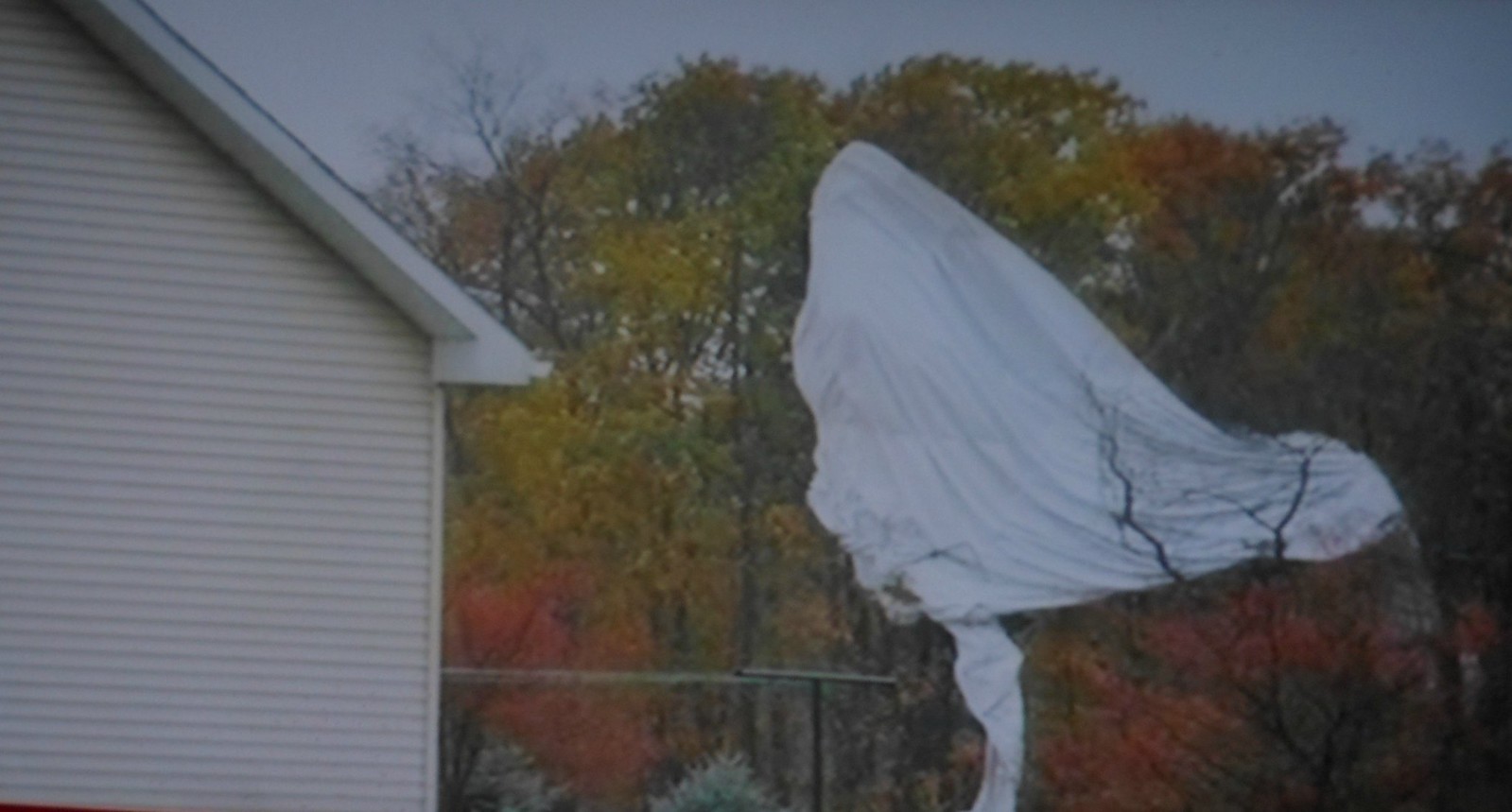
THE RUNAWAY BLIMP DOWN NEAR MUNCY PA........These are not my pictures.......I went out to the scene from the restaurant in Turbotville only to be stopped by the Pa State Police about a mile from the blimp.......: image by Carl McDaniel, 29 October 2014

THE RUNAWAY BLIMP: image by Carl McDaniel, 29 October 2015

Lunar eclipse. Peak. (Danville, Pennsylvania.): photo by fishhawk, 27 September 2015

JLENS. We won't spy on you. Trust us.: image by Richard Thompson, 29 October 2015

JLENS_028: photo by Aberdeen Proving Grounds, 18 August 2014

Ridgelines and valleys at sunset. Evening ridgeline landscape. (Danville, Pennsylvania.): photo by fishhawk, 12 October 2015
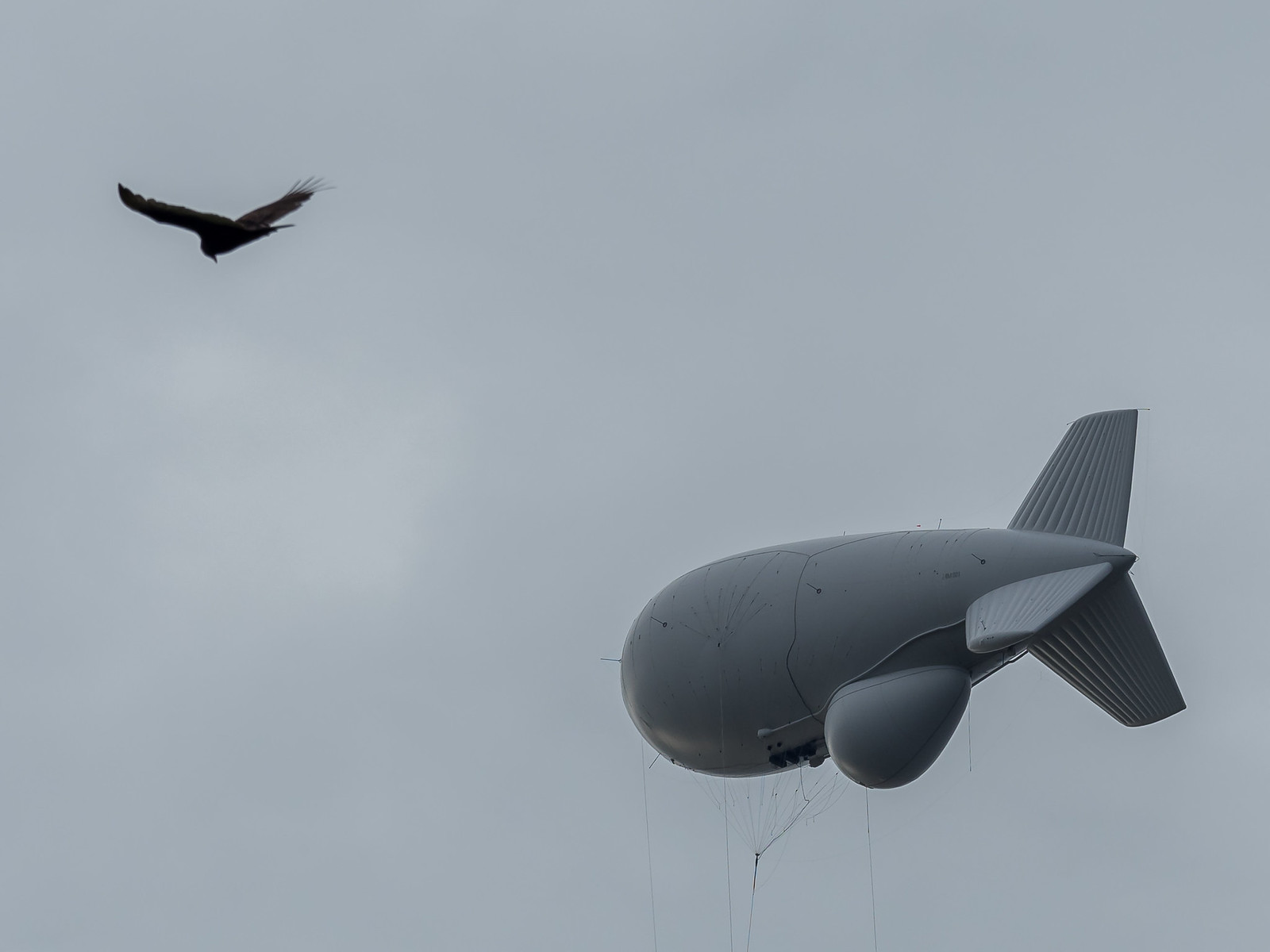



8 comments:
Dear Tom,
Love this. Thanks for sending it into the world.
Cheers,
Robb
love the ethereal poem ...I am glad to know about Eudora Welty...and that bridge reminds me of that in The bridges of Madison County movie...:)
No doubt that balloon was wreaking havoc long before it became unsnacked. How’s that T-shirt go again: “One nation, under surveillance . . .” ?
Still, you've got to admit -- seeing it unsnacked like that... that's one hell of a snood!
I used a left-handed magnifying glass (very high tech!) to search the sodden autumnal underbrush for the terrorist parachutist, but it seems he was hiding in there under a clump of sodden autumnal pixels. Devious lot they all are. Deserve everything they get.
In his later poetry, Old Wally had a way of sneakily locating the animating heart and soul of the republic in the part of Pennsylvania where he had been raised, a conceit that might have been harmless enough had not the same territory been soaked in the blood of the same nonwhite indigenes his Dutch-German ancestors had chased off the land, long before Penn Sound and the federal prison system stepped in to finish the job of modern imperialist nation-building on a local scale.
And to think those same rustic grounds of Wally's determined poetic nostalgia have now had miles of blimp cable rudely dragged o'er them, yet we're not supposed to ask, much less know, why.
However it should be plain that neither Wally nor Eudora Welty can in any way be faulted for the collapse of this civilization in the century following their departure from it. This place is simply no longer a Place, in the way Eudora had in mind.
Talking of modern, I suppose the post was meant to engage the massive topic of modern technology, one-handed yet... As though, regarding that topic, there were any escape or discussion! Fuhgeddaboudit! Human life is now an app!
For me last week was a nightmare of machines. What a wonderful society this is. One travels great distances and endures any manner of inconvenience and indignity in order to present oneself for inspection by -- machines!
I've never owned nor owned the desire to own a smartphone, but now that the bruited forfeiture of my right arm has become a talking-point in the shrunken circle of my acquaintance, a well-meaning member of society has suggested maybe arms are over-rated.
"You can write on your phone," he said. "It's voice-activated."
This kind person next handed me a phone.
"I can't," said I helpfully yet helplessly -- meaning can't see, can't hold, can't anything.
So he held it... and said, "okay, just talk into it. Say anything."
So I did. There were some white clouds floating past, in the sky, of course. The trees were yellow.
I said, "Though the clouds suggest spring, the trees indicate autumn".
And the phone took me to be saying not "spring", but "spraying".
Now that's a SUPER smart smartphone!
JLENS, by the way, in case anybody cares, didn't just start proving itself to be merely yet another hideous, useless, dumb, dangerous and costly triumphalist-tech boondoggle conducted at taxpayer expense and lining defense contractor pockets this week. Military/industrial collusion to the tune of nearly three billion simoleons and counting -- business as usual in keeping the homeland safe from imaginal swarms of killer boats and tanks crawling across Appalachia and terrorizing the Amish, multiple cruise missile launches along Chesapeake Bay mounted from dumpsters by malign homeless, and other extreme-threat frightwig scenarios straight off the disneyconcept drawing board -- has been underway for some time now. In fact you might even call this an American Success Story, if you were insane and American. It's refreshing, for example, to hear that General Hoss Cartwright, "brains" (??!!) of the program, moved on, shortly after booting it up, from the military to the "private sector" -- where, in an astonishing coincidence, he stepped immediately into the board of directors of Raytheon, which builds these bloated bags of gas and wires and computer trash. I mean, hey, ain't that the American Way? Like, how else did we save the Paris Metro from the enemies of Charlie Hebdo!!
... such a fascinating topic, no?...
Just last month, as it happens, the LA Times ran an interesting, if of course deeply depressing piece detailing how the whole JLENS comedy evolved as a "zombie program".
How a $2.7 billion air-defense system became a "zombie" program: David Willman, LA Times, 24 September 2015
As it's halloween, then, perhaps it would be diverting as well as timely to see what the same paper had to say about this week's events:
__
David Willman, LA Times, 30 October 2015
The spectacle of a giant military blimp wreaking havoc across two mid-Atlantic states this week has prompted congressional leaders to question the worth of a long troubled missile-defense program known as JLENS.
In a letter to Defense Secretary Ashton Carter and Transportation Secretary Anthony Foxx, congressional leaders wrote that the incident Wednesday “raises questions about the value and reliability of JLENS,”a system of radar-equipped blimps designed to detect enemy missiles, drones or other low-flying threats.
The letter noted that in April, JLENS had “failed to detect” a rotary-wing aircraft that flew through Washington, D.C.’s highly restricted airspace before landing on the West Lawn of the U.S. Capitol. The craft was flown by a Florida postal worker seeking to dramatize his demands for campaign finance reform.
The letter, sent Thursday, was signed by the chairman of the House Oversight and Government Reform Committee, Rep. Jason Chaffetz, (R-Utah) and the panel’s ranking Democrat, Rep. Elijah E. Cummings of Maryland.
They asked Carter and Foxx to provide extensive records on JLENS to “help the committee understand whether JLENS is a worthwhile investment of taxpayer dollars.”
The letter requests all Defense Department contracts related to JLENS, as well as “documents referring or relating to the reliability of JLENS, including ... reliability improvement plans, developmental test results, deployment test results, electronic environmental effects testing results, and information assurance test results.”
On Wednesday, a 243-foot-long JLENS blimp broke loose from its mooring at the Army’s Aberdeen Proving Ground in Maryland and rode the winds over parts of Maryland and Pennsylvania for four hours, dragging a 6,700-foot long cable behind it.
The cable knocked down power lines and left thousands of people without electricity. Two F-16 fighter jets were scrambled to track the giant airship before it came to rest on the outskirts of Moreland Township, Pa., more than 120 miles from its base.
Since its inception in 1998, JLENS (short for Joint Land Attack Cruise Missile Defense Elevated Netted Sensor System) has cost taxpayers more than $2.7 billion -- yet it has never fulfilled its intended mission.
[David Willman, LA Times 10/30 continues:]
A Los Angeles Times investigation published last month found that in test exercises, JLENS had struggled to track flying objects and to distinguish friendly aircraft from threatening ones.
Among other problems, software glitches have hobbled its ability to communicate with the nation’s air-defense networks.
At the blimps’ maximum altitude of 10,000 feet, the radar they carry can see 340 miles in any direction, far beyond the limits that the curvature of the Earth imposes on land- or sea-based radar.
The blimps are designed to operate in pairs. One searches widely for threats. The other is supposed to focus narrowly on airborne objects and transmit “fire control” data on their location, speed and trajectory.
If JLENS were working as intended, U.S. fighter jets or ground-based rockets would use the fire-control data to intercept and destroy an intruder.
The 7,000-pound airships are anchored to the ground by high-strength, 1 1/8-inch-thick Kevlar tethers. A ground crew of about 130 is needed to operate a pair of blimps around the clock.
A 2012 report by the Pentagon’s Operational Test and Evaluation office faulted the system in four “critical performance areas” and rated its reliability as “poor.” A year later, in its most recent assessment, the agency again cited serious deficiencies and said JLENS had “low system reliability.”
Despite these problems, Raytheon Co., the prime contractor, and other backers of JLENS have marshaled support in Congress and in the military to keep taxpayer money flowing to the program.
Army leaders tried to kill JLENS in 2010, The Times reported last month. Raytheon mobilized its congressional lobbyists. Within the Pentagon, Marine Corps Gen. James E. “Hoss” Cartwright, then vice chairman of the Joint Chiefs of Staff, came to the program’s defense, arguing that it held promise for enhancing the nation’s air defenses.
At Cartwright’s urging, money was found in 2011 for a trial run of the technology — officially, an “operational exercise” — in the skies above Washington.
Cartwright retired the same year — and joined Raytheon’s board of directors five months later. As of the end of 2014, Raytheon had paid him more than $828,000 in cash and stock for serving as a director, Securities and Exchange Commission records show.
Two of the blimps have been based at Aberdeen Proving Ground to carry out the operational exercise.
Philip E. Coyle III, a former director of operational testing and evaluation for the Pentagon, said the latest setback with JLENS demands strict scrutiny of the program.
“This is yet another incident with JLENS that calls for the Congress to examine the effectiveness of the system,'' Coyle said in an interview.
Questions surround what caused the blimp, also called an aerostat, to break loose Wednesday and drift such a long distance. A retired military officer who oversaw the program said that “a properly functioning deflation device should have brought the aerostat to a low-speed impact within a few miles” of its base in Maryland.
Great post. Thanks, Tom. The Stevens poem is spectacular. He had quite a gift.
Hey Terry, many thanks, you're right, spectacular for sure... obviously it takes a virtuoso to recognize the delicate touch of a virtuoso.
(My collegiate copy of Stevens' poems has two careful asterisks next to the closing couplet of this one, my discreet mark of highest honours back in the earnest dawning of the day.)
Post a Comment